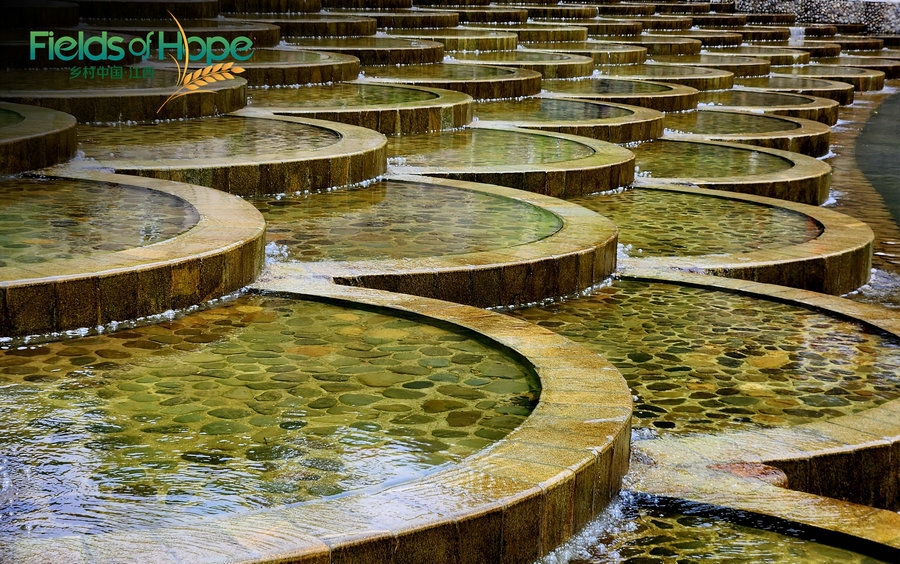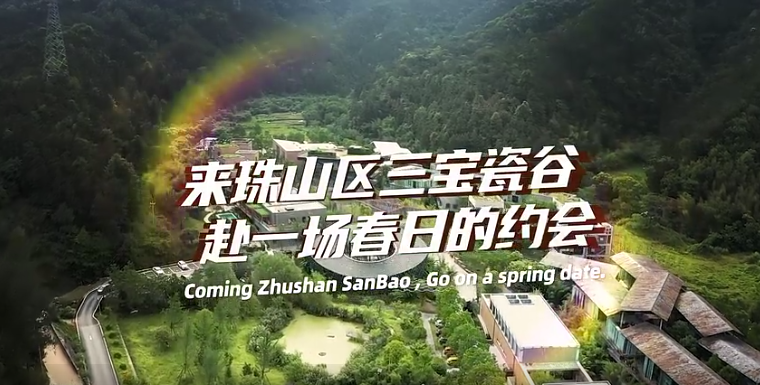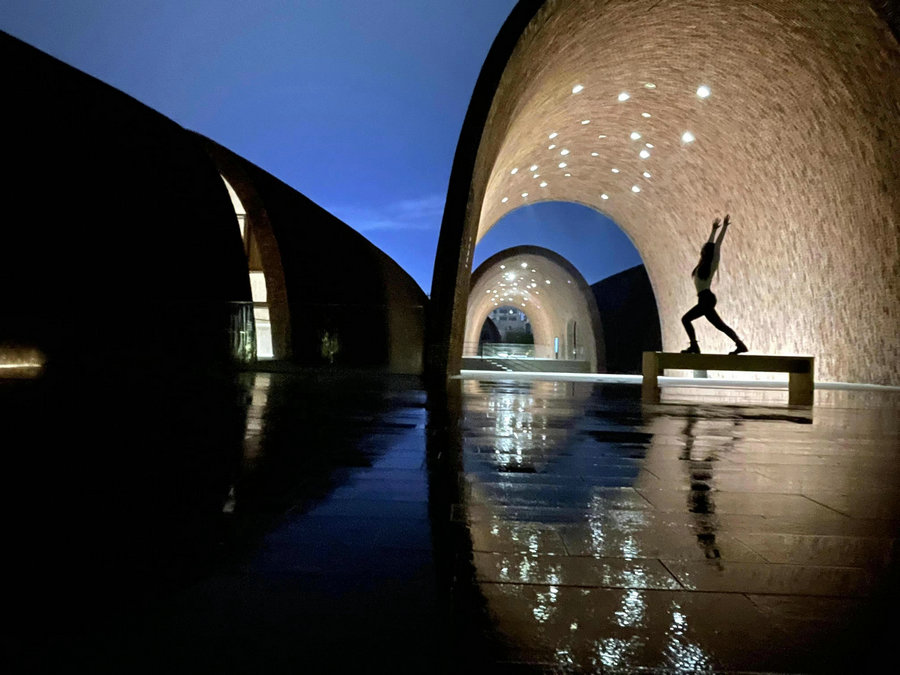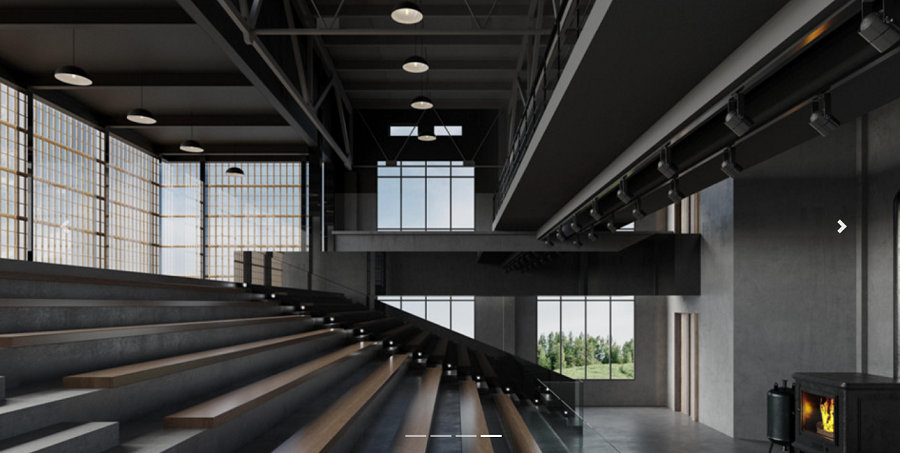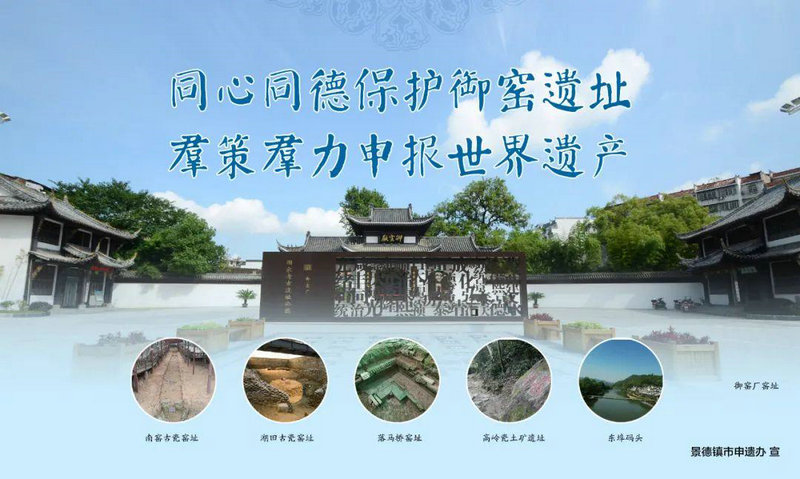
"Changjiang Estuary No.2”, the largest and most well-preserved wooden shipwreck found through underwater archaeology in China and carrying a myraid of cultural relics, quickly rekindled the fire of Jingdezhen. The wreck contained a large number of porcelain wares from the Jingdezhen private kilns in the late Qing Dynasty, which provides much more references for the archaeological findings of jingdezhen kiln sites in recent years. Jingdezhen, once again, has caught the world’s attention.
Imperial Kiln Factory site witnessed the peak of the Yuan, Ming and Qing porcelain industry
In 1982, on the twenty-fourth day of the lunar month, the construction site workers in Jingdezhen Zhushan Road found that the excavated soil was mixed with many pieces of broken porcelain. Identified by experts, these broken pieces of porcelain are all from the ancient porcelain wares produced by the Imperial Kiln factory during the Xuande period of the Ming Dynasty, since then the mystery of the Royal Kiln Factory site has been revealed.
Not long ago, the reporter came to Jingdezhen Imperial Kiln Factory National Archaeological Site Park, the excavated porcelain pieces have been preserved now. According to the guide, after years of archaeological excavation, it was not only found here that porcelain pieces from the Yuan Dynasty and Hongwu, Yongle, Xuande, Zhengtong, Chenghua, Hongzhi, Zhengde and other dynasties, but also unearthed a number of superb works. Some of which are exclusive pieces, and the number of excavation mounted to “ten tons, billion pieces”.
“Although Jingdezhen city is small, it is very unique.” As early as 2010, the former Palace Museum President Shan Jixiang supported the application for World Cultural Heritage for the Imperial Kiln Factory site in Jingdezhen. Speaking of the Imperial Kiln Factory site as the core of the declaration of World Cultural Heritage, the Head of Cultural Relics Protection from the Municipal Bureau of Culture and Tourism, Zhan Xinghua, said that Jingdezhen is blessed with a long and splendid history of ceramic culture, the Imperial Kiln is one of the representatives of Jingdezhen ceramic culture, symbolizing the peak of the development of China’s porcelain industry and the highest quality of the world’s porcelain industry at that time. Furthermore, it holds a significant value in the history of China and the world’s handicrafts. World Cultural Heritage is an important legacy for human beings and an influential resource for the sustainable development, thus the Imperial Kiln Factory is taken as the core to be declared as World Cultural Heritage.
Zhan Xinghua stated that the application of World Cultural Heritage will help strengthen the protection of cultural relics and cultural heritage in Jingdezhen and upgrade the level of cultural heritage protection. Also, it will accelerate the development of cultural tourism industry, boosting the co-development of associated industries to form new economic growth opportunities and promote the sustainable development. In addition, it will improve the urban landscape and living environment, highlighting Jingdezhen’s unique historical heritage and picturesque scenery. Meanwhile, the application process is an unprecedented promotion and generalization of heritage conservation activities, so it will further increase the public appreciation and knowledge of cultural heritage and raise public awareness of conservation to enhance the influence of Jingdezhen to the world.
Seven years of application for World Cultural Heritage never stops to polish the brand of millennial porcelain capital
When introducing the application progress a staff member Kong Huanhuan said that, “Over the past seven years, Jingdezhen has been working on the intergation of the concepts that World Heritage promotes and the sustainable urban development of Jingdezhen, and never stops to polish the brand of millennial porcelain capital.”
In March 2015, Jingdezhen officially launched the application of World Cultural Heritage with the Imperial Kiln Factory site as the core and 18 historical sites including the Imperial Kiln Factory site, the ancient porcelain kiln site in Leping, the ancient porcelain kiln site in Lantian, the kiln site in Hutian, the kiln site in Liyang, the kiln site in Luomaqiao, the kiln site in Guanyinge, the kaolin mine site, the petuntse site in Yaoli, the porcelain mine site in Jinkeng, the Dongbu dock, the Sanlumiao dock (the ancient street of the Ming and Qing dynasties), the Hubei Guild Hall, the Fencheng Guild Hall, the kiln site in Huanglaodao town, the Xujia kiln site, the Liujia kiln site, etc. In January 2017, the Imperial Kiln Site was listed on the “Tentative List of China’s World Cultural Heritage”, and Jingdezhen officially was granted an “admission voucher” for the application.
In April 2018, under the leadership of the organization of the municipal government, the Municipal Heritage Declaration Office took the lead in holding a briefing on the promotion of the application of Jingdezhen Imperial Kiln Factory site as World Cultural Heritage, where a team of five people led by Lv Zhou, director of the National Heritage Center of Tsinghua University, was invited. According to the guidance of experts, the theme of the declaration was further clarified, and it was established that the 18 historical sites were reduced to 6 as the main body or the overall application of heritage elements.
Why reduce the 18 historical sites to 6? Kong Huanhuan explained that this change is the result of experts’ demonstration, the Imperial Kiln Factory site, Luomaqiao kiln site, Hutian kiln site, Leping South kiln site of ancient porcelain kilns, kaolin mine site, Dongbu dock, all the six historical sites hold more distinctive historical features and values.
It is worth mentioning that, in order to promote the work of heritage application, Jingdezhen introduced local legislation in 2018, Jingdezhen Imperial Kiln Factory Site Protection and Management Regulations, and also hired top domestic experts to reside in Jingdezhen to help promote the groundwork for the application.
Jingdezhen still has a long way to go
World Heritage application is a long and complicated process. It took 12 years for The West Lake in Hangzhou, 7 years for the Grand Canal in China, and 8 years for the Silk Road Project. It took more than 20 years for Mount Fuji in Japan to apply for the World Cultural Heritage, and their direction had been changed halfway through.
How long will it take for Jingdezhen to be declared as World Heritage Site? The UNESCO World Heritage Center limits a member country to a maximum of two World Heritage sites a year, usually one natural heritage (or dual natural and cultural heritage) and one cultural heritage (or cultural landscape heritage) per year.
“We will always be on the road.” Zhan Xinghua said that the heritage application is not just a result. What they concern more is the process. It is a comprehensive and huge system of conservation projects with high standard requirements and long way to go, and although there are many cities in the queue, our city currently has been given priority. “We can be anxious about it, but the work should be done systematically.” Zhan added that, the work of heritage application should follow the rules of heritage conservation and heritage application.
Last year, in order to accelerate the application process of Imperial Kiln site for World Cultural Heritage, Jingdezhen formulated the Three-year Action Plan and Task Division Table (2021-2023) for the Application of Jingdezhen Imperial Kiln Site for World Cultural Heritage, striving to promote the Imperial Kiln site to achieve a leap from national to world class. This year, the General Plan of Jingdezhen Large Site Protection and Utilization Area and Jingdezhen Ceramic Cultural Heritage Recognition and Protection Management have been compiled to present Jingdezhen as a living “ceramic history and culture textbook” in a more practical way.
4·18 International Monuments and Sites Day, Jingdezhen carried out a number of activities to help the application for world Heritage List. We invited scholars and experts to the “Jingdezhen Application for World Heritage List” Tiktok live broadcast, and chatted about “Jingdezhen application for World Heritage” on the topics such as “historical evolution, spatial layout, heritage value and protection and utilization of imperial Kiln Site”. In the Imperial Kiln factory archaeological site park held activities, such as “little hands hold big hands to cheer up for the application for world Cultural Heritage—little porcelain archaeologists ”.
Jingdezhen has taken the application for world Heritage as the leading project of the national pilot zone, and set the goal of “striving for 2024 and ensuring the success of the application in 2026”, so that Jingdezhen could have a brand new opportunity to be rediscoverd by the world.

